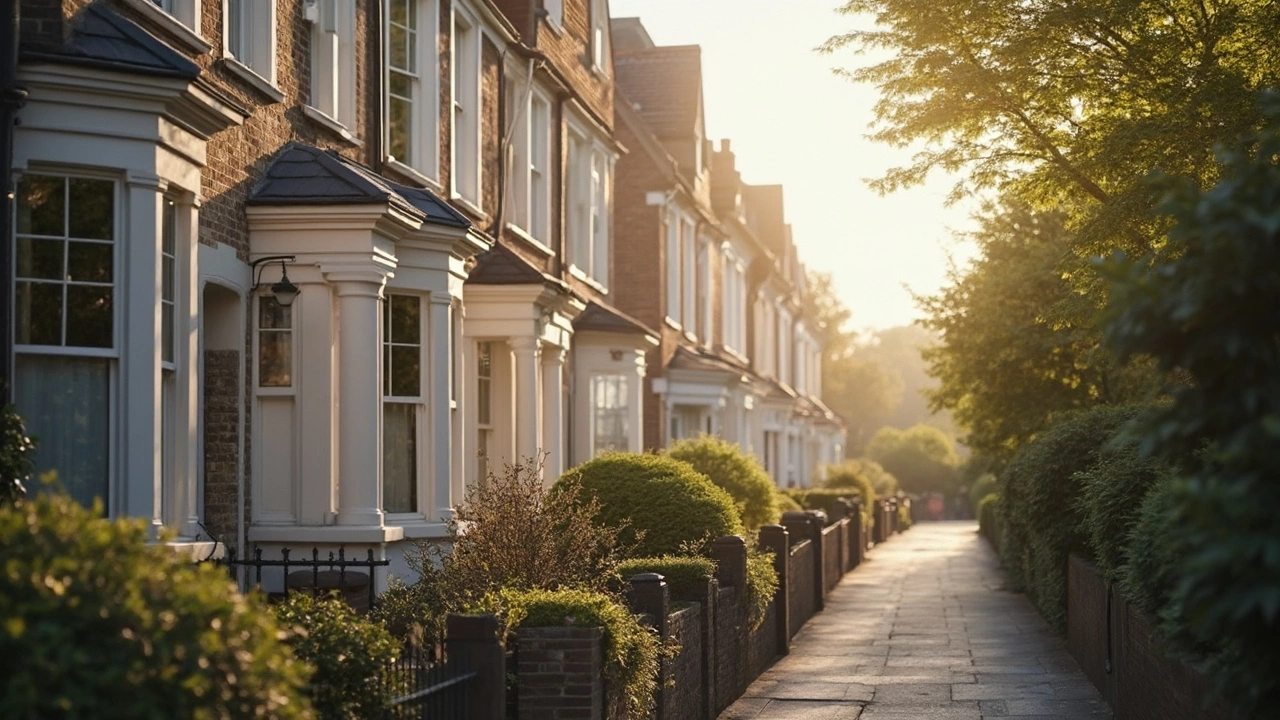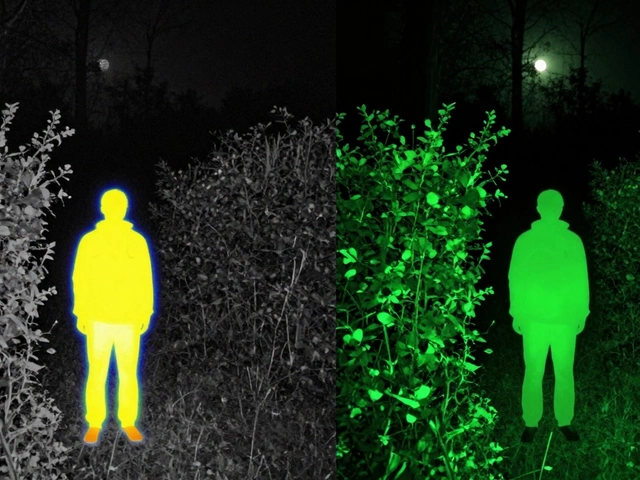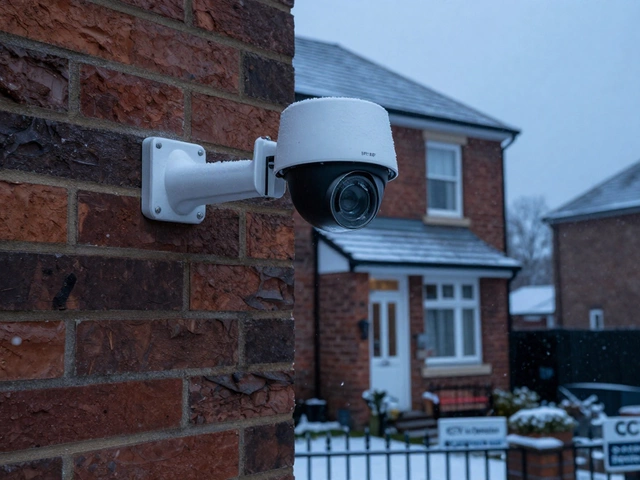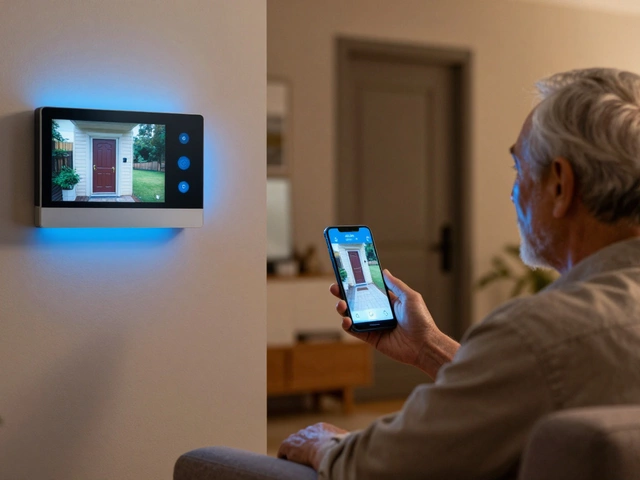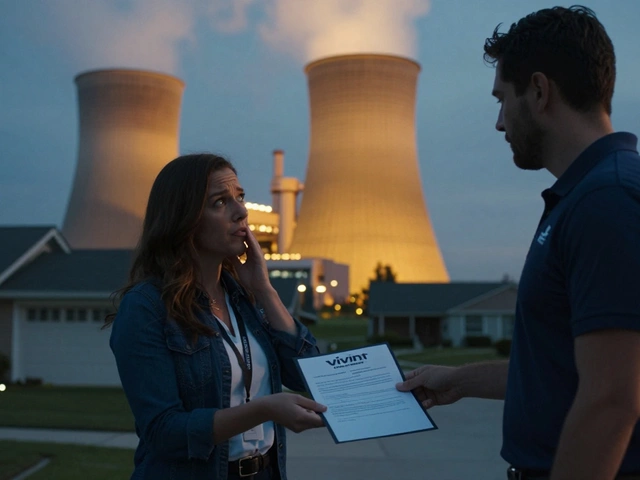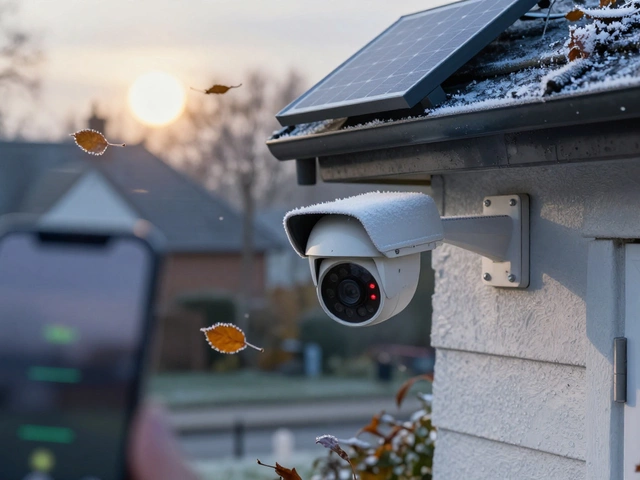You see them everywhere now—tiny cameras perched on porches, garages, and backyard fences. It’s tempting to grab a few for your own place, but is it really allowed to have security cameras outside your house?
Let’s get clear on something right away: in most places, yes, you can put up outdoor cameras around your home. People use them to keep an eye on packages, cars, or even just to see who’s at the door. A lot of folks feel safer knowing they’ve got footage if someone tries to steal a bike or break into a car.
But it’s not as simple as sticking a camera wherever you want. You can’t just point cameras straight at your neighbor’s bedroom and expect zero drama. There are some rules—some are legal, some are just about keeping things cool with the people living around you. Next, let’s dig into what’s actually allowed and what to watch out for so you don’t get into hot water (or ruined friendships) over a couple of security cams.
- Is It Legal to Have Outdoor Security Cameras?
- Navigating Privacy Laws and Expectations
- Where You Can and Can’t Point Your Cameras
- Neighborhood Etiquette and Common Complaints
- Smart Setup Tips for Safer, Friendlier Homes
- Cameras That Play Well with Your Neighborhood
Is It Legal to Have Outdoor Security Cameras?
Here’s the simple answer: in the US, you can install security cameras outside your house as long as you’re recording areas you have the right to watch, like your own yard, driveway, or front porch. Most states have zero laws saying you can’t put up outdoor cameras on your property. The key thing is making sure the lens isn’t spying on spaces like someone else’s bathroom, bedroom, or inside their house—those spots are big no-go zones.
Some states have extra privacy laws. For example, in California, it’s illegal to record anyone where they expect privacy, even by accident. Texas also has similar rules. It’s smart to double-check your own state, but honestly, these laws are meant to stop real invasions—like someone pointing a camera straight into a neighbor’s window, not grabbing wide shots of sidewalks or driveways. There’s rarely an issue with cameras aimed only at your yard or entryway.
A lot of cities and home owner associations (HOAs) have their own rules. A few might ask you to keep cameras off shared spaces—like community pools—or not to install anything facing neighboring homes. Always check your HOA handbook or call your city’s office before drilling anything in.
Want a snapshot of how common outdoor cameras are? Here’s an idea:
| Country | Households with Outdoor Cameras |
|---|---|
| United States | 38% |
| United Kingdom | 32% |
| Australia | 19% |
If you rent, things get a little trickier. You’ll need your landlord’s OK before installing permanent home security cameras outdoors. Some landlords don’t like you drilling holes or wiring anything, but plenty are fine with cameras under the eaves or on fences if you promise to patch things up later.
The takeaway: you usually can have outdoor cameras—just keep them on your turf, check your local or HOA rules, and be smart about where they're pointed. That way, you keep your place secure and avoid any legal headaches.
Navigating Privacy Laws and Expectations
Here’s the deal with security cameras outside your house: the laws are actually pretty clear in a lot of places, but the fine print depends on where you live. In the U.S., you’re mostly in the clear to record video on your own property—outside and even at the edge, like your driveway, sidewalk, porch, and yard. But you’ve got to be careful about recording private areas that don’t belong to your home, like inside a neighbor’s house or their private backyard.
Most states allow video recording without people’s consent as long as there’s no "reasonable expectation of privacy." Bathrooms, bedrooms, and spaces blocked from public view? Off limits. If your cameras catch the street, that’s usually fine—streets and front yards are public spaces.
- Don’t point your cameras straight into your neighbor’s windows or backyard.
- You can cover your front gate, porch, or driveway (where the public can already see).
- Most places do not allow audio recording without consent. Basically, don’t record conversations—you’ll get into trouble fast that way.
Some states like California are stricter about audio. You need all-party consent to record sound, so turn off your camera’s microphone unless everyone agrees. For video, you’re covered as long as you stick to your property and don’t snoop on private spaces.
Curious about other countries? The UK, for example, requires you to put up a sign if your home security cameras monitor public spaces. In Australia, most rules are similar to the U.S.—video OK, but watch the privacy zones.
| Country | Can I Record Video? | Can I Record Audio? |
|---|---|---|
| United States | Yes, on your property | Only with consent, varies by state |
| United Kingdom | Yes, but notify public | Only with consent |
| Australia | Yes, on your property | Consent usually required |
When in doubt, check your local laws, or just ask a lawyer or your city’s rules office. And if you live anywhere with a homeowners association, double-check their rules. They sometimes have even stricter guidelines about what security cameras are OK and where you can point them. It’s a good call to talk with neighbors, too, and let them know where your cameras are going. Keeps things transparent—so nobody gets the wrong idea.
Where You Can and Can’t Point Your Cameras
So, where can you actually aim your security cameras without crossing the line? The biggest rule boils down to this: you can record anything that happens on your own property — your front yard, driveway, walkways, or backyard are fair game. That includes footage of anyone walking up to your porch or even squirrels raiding your bird feeder.
Things get trickier once your outdoor cameras catch areas outside your own yard. In most parts of the U.S., it’s legal if your cameras happen to pick up what’s in plain view from public spaces — like the street or sidewalk in front of your house. But privacy matters kick in when you start recording your neighbor’s private zones, especially places where someone expects real privacy, like bedrooms, bathrooms, and backyards with high fences.
- Never point cameras into your neighbor’s windows or fenced-off backyard, even if they’re easy to see.
- Front yards and driveways are usually alright, just keep cameras focused on your own boundaries.
- Doorbell cameras are fine because they film your own doorstep, but avoid angling them directly at your neighbor’s window or main entrance.
Here’s a helpful stat: In a 2023 neighborhood survey, nearly 60% of neighbor complaints about outdoor cameras involved cameras clearly aimed at a neighbor’s window or private patio. That’s the fastest way to get a letter from someone (or worse, a visit from the homeowners association).
Most cities let you cover any space that the public can easily see, including the sidewalk, but you still have to honor privacy where it’s expected. Some states, like California, have strict privacy laws — recording videos where someone would reasonably expect not to be seen, like a bathroom or bedroom, can get you fined or even sued.
| Location | Camera Allowed? |
|---|---|
| Your front porch | Yes |
| Neighbor's backyard | No |
| Shared driveways | Usually, but best if only your section |
| Public sidewalk/street | Yes |
| Neighbor's open window | No |
When in doubt, stick to filming just your own stuff. If you need coverage near a property line, adjust the view or use privacy zones (lots of camera apps offer this). It keeps the peace and lets you focus on your own home security without any unwanted arguments.
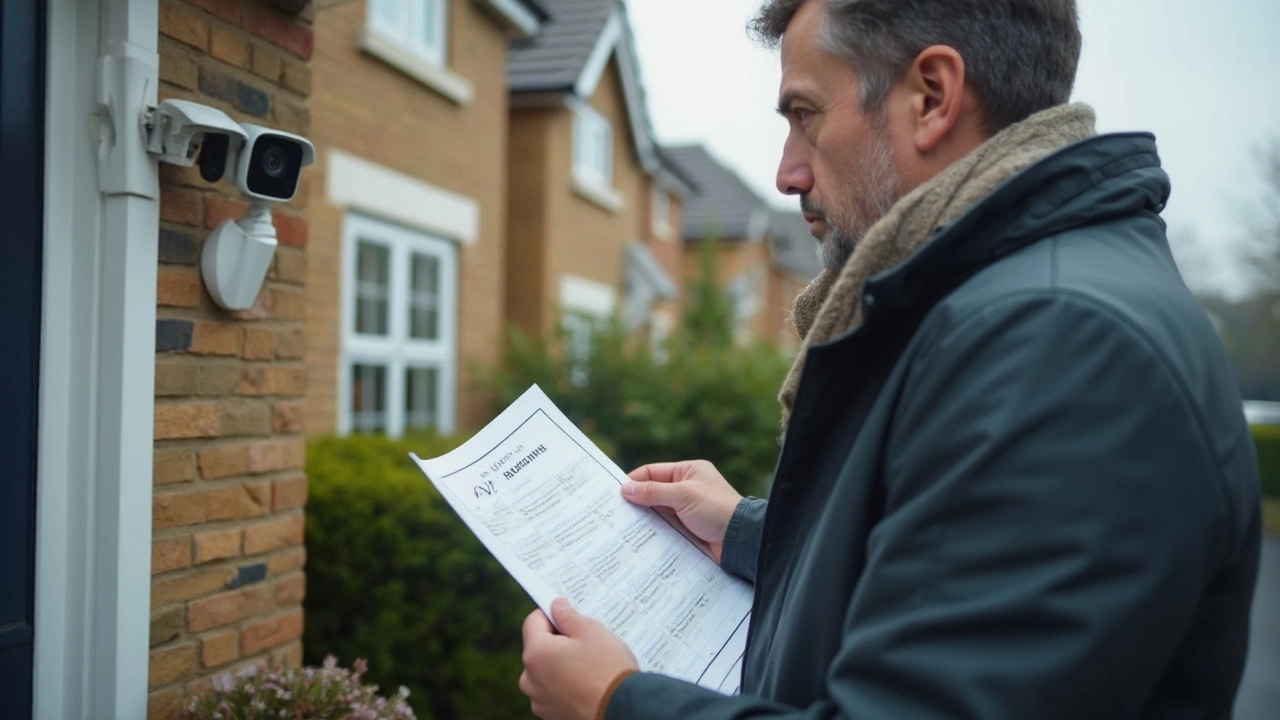
Neighborhood Etiquette and Common Complaints
So you’re ready to set up your outdoor security cameras, but nothing makes you the neighborhood villain faster than a camera pointed at the wrong spot. Most complaints come up because people feel like they’re being watched in their own private area, not public spaces like sidewalks or streets. Your neighbor’s backyard or bedroom window? Big no. Most states don’t have laws about recording video outdoors, but privacy expectations kick in once someone’s personal space is involved.
A survey from 2023 found that the top three complaints about home security cameras were:
- Cameras aimed at someone else’s door or windows
- Lack of notification when cameras are installed
- Audio recording without letting people know
Here’s how to avoid being “that house” on the block:
- Point cameras only at your own property—driveway, porch, yard, or garage.
- If your camera barely catches part of a neighbor’s area by accident, most people are fine if you let them know and show you’re not trying to spy.
- Don’t record sound unless it’s absolutely necessary—some places have strict rules about audio recording because conversations are extra private.
- If you join a neighborhood watch group, share footage only for crime prevention, not for gossip.
- Put up a simple sign saying you have cameras. It’s polite and can even help deter would-be thieves.
You don’t need to knock on every door, but giving neighbors a heads-up about new outdoor cameras can squash awkwardness before it starts. A quick heads-up does wonders when it comes to trust—and might even get you tapped into the unofficial neighborhood watch grapevine.
Smart Setup Tips for Safer, Friendlier Homes
Getting the most out of your security cameras outside means thinking about both safety and the feel of your neighborhood. You want to protect your home, but you don’t want people to feel like they’re on Big Brother. The good news? It’s easy to keep things friendly and secure if you follow the right steps.
First, place cameras where they can actually help—not just where they look cool. Focus on high-traffic spots:
- Front doors (over 70% of break-ins happen here, according to FBI reports from 2023)
- Driveways or garages—great for watching cars and package deliveries
- Backyards or gates, especially if there’s a side entrance
Point your outdoor cameras at your own property, not through your neighbor’s window or into their yard. It shows respect. Most modern cameras let you set up zones or adjust the frame so you’re not overreaching.
Give your neighbors a heads-up if a camera could face their way. A quick chat or group text avoids awkward situations. Being upfront now beats dealing with complaints later.
Think about how you store and access footage. Many home security systems let you choose local SD cards, cloud storage, or even alerts that only record when motion is detected. That means less junk video and more privacy.
If you want to avoid any trouble, use signs that say your house uses security cameras—some states and insurance companies actually recommend it. Visible signage can even scare off would-be thieves before anything happens.
| Quick Setup Stats | Why It Matters |
|---|---|
| Camera at main entry | Over 60% of burglars pick the front door |
| Motion alerts on | Instant notification = better response |
| Storage set to 30 days or less | Protects privacy, follows the best practices |
Finally, keep your home security camera app and software updated. Updates patch security holes and give you better features, which means fewer headaches down the line. Take a few minutes each month to check for updates. It’s a simple step that can save you a whole lot of trouble.
Cameras That Play Well with Your Neighborhood
Getting security cameras for the outside of your home doesn’t have to mean making enemies. There are actually cameras built to take the edge off neighborhood worries, so you can look out for your own place without looking like a spy on everyone else’s business.
The most neighbor-friendly models have these things in common:
- Adjustable Field of View: You want cameras that let you change exactly where they point. That way, you can cover your driveway or porch without spilling over into your neighbor’s windows.
- Privacy Zones: Some home security cameras let you black out parts of the image—like your neighbor’s yard—so you don’t even record it. Ring, Arlo, Google Nest, and Eufy all offer this option.
- Indicator Lights: Visible lights show the camera’s recording. This can help neighbors feel less paranoid about what’s being filmed.
- Audio Options: Some states and countries have laws about recording audio. Consider models that let you turn audio recording off—this keeps you on the right side of privacy laws.
If you’re into smart home stuff, check out systems that play nice with your outdoor cameras. Google Nest, for example, lets you share access only with people you trust, and Arlo makes it clear in the feed when you’re live-viewing or recording.
| Feature | Ring | Arlo | Google Nest | Eufy |
|---|---|---|---|---|
| Privacy Zones | Yes | Yes | Yes | Yes |
| Audio Disabling | Yes | Yes | Yes | Yes |
| Indicator Lights | Yes | Yes | Yes | Yes |
Brands know privacy is a top concern now. Most big names give you these settings, but always check in the product features before you buy. Don’t settle for a camera that records more than you need—it just makes you look bad and makes your neighbors uneasy.
It’s also smart to let neighbors know you’re putting up outdoor cameras, especially if your home is close to theirs. A quick chat can go a long way, and sometimes, your setup ends up helping the whole block if there’s ever a package thief or a car break-in. Respect people’s boundaries, use the privacy features built in, and you’ll have a home security setup that does its job without starting drama.

